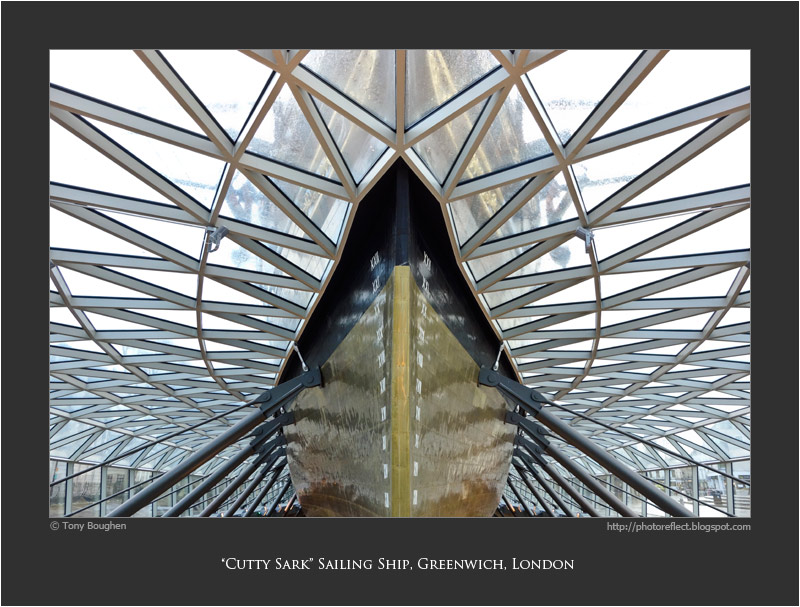click photo to enlarge
Two years ago the Cutty Sark visitor centre opened to the public. It was built following a fire in 2007 that seriously damaged the old sailing ship. The Cutty Sark is one of the best known and loved of Britain's nineteenth century sailing ships. It was built by Scott & Linton on the Clyde in 1869, one of the last tea clippers to be built and one of the fastest too. The opening of the Suez Canal and the advent of steam ships meant that the work for which it was built soon ended and the carrying of wool from Australia became her main task.
The new visitor centre tells the story of the venerable vessel and is designed to do it in a way that is more commodious for the paying customers. Before the fire the ship rested in a dry dock. However Grimshaw Architects were tasked with making a centre that included more under-cover areas. The answer they came up with is ingenious but not universally liked. A wrap-around latticework of glass and metal forming a wall, roof and entrance, combined with steel supports that raise the ship off the floor of the dry dock, allow the area beneath the ship to become a large indoor space with exhibitions, offices and a cafe. Lifts and stairs allow access to different levels of the dock and ship. The inside and deck of the ship is open to the public in the same way that it always was.
Clearly there are benefits to the display of the ship by having the new covered space. However, there is one very big disadvantage that critics have seized on and that is that the ship as a whole cannot be seen in one view - the top and bottom can only be viewed separately. This prevents the beautiful, sleek lines of the Cutty Sark from being seen, and it is this, as much as anything else that has provoked an intense dislike of the new facilities. In fact, so widespread is the disapproval of the visitor centre - it has been likened to a bus shelter! - that it was the recipient of the Carbuncle Cup in 2012. This award, made by the magazine, "Building Design", is for the "the ugliest building in the United Kingdom completed in the last 12 months". I think the building has serious drawbacks but I'm not entirely sure it deserved such disapprobation. Why? Well, the space created beneath ship is quite spectacular, and though it doesn't make up for the loss of a complete view of the ship, is enough I think to disqualify the project from consideration for UK architecture's "unaward".
photograph and text © Tony Boughen
Photo 1
Camera: Sony RX100
Mode: Aperture Priority
Focal Length: 10.4mm (28mm - 35mm equiv.)
F No: f6.3
Shutter Speed: 1/30 sec
ISO:640
Exposure Compensation: -0.3 EV
Image Stabilisation: On


